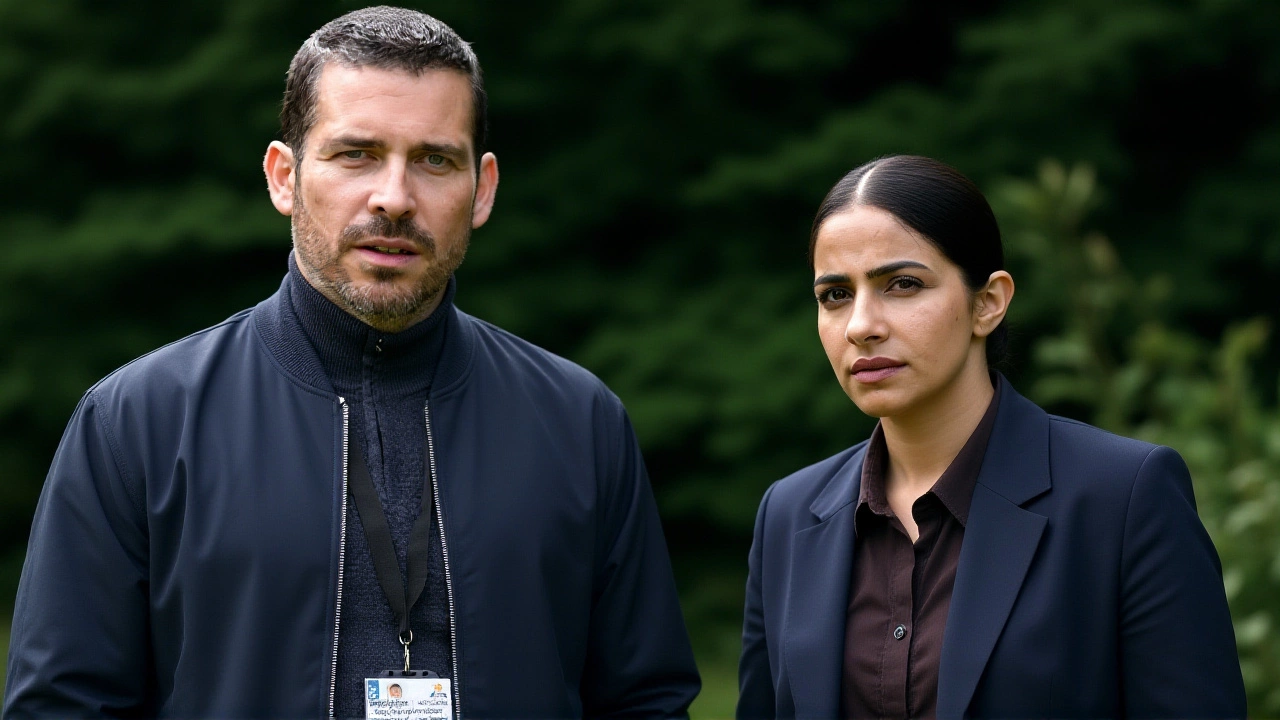At precisely 8:00 PM UTC on Friday, November 5, 2025, Channel 5 launches its most atmospheric crime drama in years: Cooper and Fry. Starring Mandip Gill and Robert James-Collier as a pair of clashing detectives, the show doesn’t just solve murders—it wrestles with ghosts, both literal and metaphorical, buried deep in the misty hills of the Peak District. And yes, the folklore? It’s real. At least, in Edendale, it is.
A Partnership Built on Doubt
Robert James-Collier, best known as the scheming Thomas Barrow from Downton Abbey, plays Detective Ben Cooper—a man who listens to the land as much as he listens to witnesses. He’s the type to pause before a stone circle and ask, "What did they see here?" Meanwhile, Mandip Gill, fresh off her tenure as Yaz Khan in Doctor Who, portrays Detective Diane Fry: sharp, skeptical, and utterly unimpressed by tales of screaming skulls and hand-of-glory curses. "Folklore doesn’t leave fingerprints," she says in one early episode. "But people do." The contrast isn’t just character-driven—it’s narrative fuel. As the Radio Times noted, their dynamic echoes Mulder and Scully, but with more rain and fewer alien abductions. Where Scully needed evidence, Fry needs paperwork. Where Mulder believed, Cooper *respects*. And in the isolated villages of the Peak District, where centuries-old superstitions still shape how people bury their dead or lock their doors, that difference becomes the key to cracking cases no one else can touch.From Page to Screen: The Legacy of Stephen Booth
This isn’t just another British crime procedural. It’s the long-awaited television adaptation of Stephen Booth’s 17-novel series, which began with Black Dog in 2000. Booth, born in 1952 in Bolton, Lancashire, didn’t just write detective stories—he built a world where the landscape is a character. The fictional town of Edendale, where every trail leads to folklore and murder, isn’t invented out of thin air. It’s stitched from real places: the abandoned quarries of Derbyshire, the moss-cloaked caves near Castleton, the stone cottages where families still whisper about the "Lady of the Moor." Channel 5 commissioned the series in early 2024, with principal photography stretching from March to September 2024 across real Peak District locations. Director Ryan Tohill, known for the hauntingly beautiful The Dig, didn’t just film on location—he immersed himself in local oral histories. "We spoke to pub landlords, archaeologists, even the guy who runs the ghost walks in Mam Tor," Tohill told Broadcast Now. "The stories they told us? Half of them made it into the script."The Peak District: More Than a Backdrop
Established in 1951 as the UK’s first national park, the Peak District spans 555 square miles across five counties. Its limestone scars, moorland plateaus, and hidden valleys have long inspired writers, painters, and, apparently, crime writers. But here’s the twist: while many crime dramas use rural settings for isolation, Cooper and Fry uses it for *connection*. The land doesn’t just hide bodies—it holds memories. A child’s rhyme sung in a village school might point to a missing person. A ritual burial spot, long abandoned, turns up a fresh grave. The show’s writers didn’t just borrow folklore—they treated it as a living, breathing part of the community. "It’s not superstition," one local character says in Episode 3. "It’s how we remember."
Why This Matters Now
British TV is saturated with crime dramas. From Line of Duty to Happy Valley, audiences crave grit. But Cooper and Fry offers something rarer: a quiet unease. It doesn’t rely on car chases or forensic tech. It leans into silence—the kind that settles after a funeral, or when the wind stops in the hills. And Channel 5 knows it. The 8:00 PM slot isn’t random. It’s the same time they’ve used for Prime Suspect reruns and Waking the Dead marathons—slots reserved for shows that make you look over your shoulder. With an estimated production cost of £600,000 per episode, according to Broadcast Now’s October 2025 analysis, this is a high-stakes bet. But in an era of streaming overload, Channel 5 is betting that viewers still crave stories rooted in place, in history, in the things we’re too polite to talk about… until someone dies.What’s Next?
The first season consists of six episodes, airing weekly through December 2025. Rumors suggest a second season is already in development, with Booth reportedly involved in shaping future storylines. If ratings hold, expect more regional folklore to surface—perhaps from the Welsh borders or the Lake District in Season 2. Meanwhile, fans are already digging into Booth’s novels, searching for clues the show might not have included. The twist? The real mystery isn’t who did it. It’s why the past refuses to stay buried.Frequently Asked Questions
How does Cooper and Fry differ from other British crime dramas?
Unlike procedurals that rely on forensics or serial killer tropes, Cooper and Fry uses regional folklore as a narrative tool. The crimes are grounded in real traditions—like the "hand of glory" or "screaming skulls"—that still linger in Peak District villages. The detectives’ conflicting beliefs mirror how communities reconcile modern policing with ancestral memory, making each case feel less like a puzzle and more like a cultural excavation.
Are the folklore elements in the show based on real legends?
Yes. While Edendale is fictional, the legends are pulled from documented Peak District folklore: tales of ghostly hounds, cursed stones, and buried bones with ritual markings. The "screaming skull" motif, for instance, appears in 19th-century county records from Derbyshire. Local historians confirmed that some families still keep skulls in attics as protective charms—a detail the show’s writers incorporated directly into Episode 2.
Why was Channel 5 chosen to adapt Stephen Booth’s novels?
Channel 5 has a proven track record with character-driven British crime dramas like Waking the Dead and Prime Suspect. Unlike BBC or ITV, which often prioritize big budgets and star power, Channel 5 excels at intimate, location-specific storytelling. Booth’s novels—quiet, atmospheric, and deeply rooted in place—fit their brand perfectly. The network also owns the rights to several of Booth’s earlier works, making adaptation logistically smoother.
How accurate is the portrayal of the Peak District?
The geography and architecture are meticulously recreated. Filming took place in Castleton, Hathersage, and the Dark Peak’s gritstone edges, with local landmarks like Mam Tor and the Blue John Cavern appearing in key scenes. Even the dialects were coached by a linguist from Sheffield University. The only fictional element is Edendale itself—but its layout mirrors real villages like Eyam, famous for its plague history and lingering superstitions.
What’s the significance of the 8:00 PM timeslot?
Channel 5 reserves 8:00 PM for its flagship dramas, a slot previously held by Waking the Dead and Prime Suspect. It’s designed for viewers who want substance over spectacle—adult themes, slow-burn tension, and emotional depth. The timing also avoids direct competition with BBC One’s crime block, positioning Cooper and Fry as the alternative for viewers seeking something more atmospheric and less formulaic.
Will there be more seasons, and could other regions be explored?
A second season is confirmed in development, with Stephen Booth reportedly advising on new storylines. While Edendale remains the core, producers have hinted at expanding into the Welsh Marches or the North York Moors in future seasons—regions with equally rich folklore traditions. The show’s success may even inspire adaptations of other regional crime novels, turning Channel 5 into a hub for "place-based" mystery storytelling.
